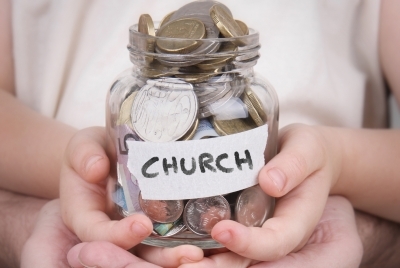
How to Set a Basic Church Budget
The closing of a year and beginning of a new year are great times to assess the church budget, or create one! Think of it as a resolution for a healthier church, since an organized budget provides benefits that last throughout the year. When every dollar is given a purpose, church administration is easier and giving is more likely to increase.
Being freed from debt and financial stress means church staff can focus on what’s important, like better serving the church, giving back to the community, and funding missions.
Since churches are largely funded by their members’ tithes and offerings, a transparent budget will provide assurance that their money is being managed responsibly. This helps promote church membership and retain existing members.
The most basic elements of a budget are income and expenses. Simply put, how much money is coming and how much money is going out. When creating a church budget, start by listing out every source of the church’s income. This should include projected income, not just what came in during previous years.
Then, list out every expense the church incurs. Talk to the other leaders and anyone that is allowed to spend money on behalf of the church to make sure that every expense is accounted for. From here, you can take a focused look at each expense category and determine how much money needs to be allotted monthly, and if there are ways to trim those expenses.
This may be a good time to consider different revenue streams for the church, if in major debt.
Did you know that about half of the churches in America are in debt?
It is tempting to operate like a so many businesses (and individuals) do — taking out loans, charging expenses with money you don’t have, and not paying with cash. But churches should remember that “the borrower is slave to the lender.” A church steeped in debt is not free to perform its function, just as a family, business, or individual isn’t.
Some ideas for short-term goals of a budget are to save three to six months of operating expenses, pay off all church debt (excluding the mortgage), establish a sinking fund for expensive items such as buildings and grounds maintenance (think new roof or flood damage), and put a percentage of the income towards savings.
Make sure your staff knows they are valued, too, by being provided with adequate salaries. Despite how some people view the pastorate, working in ministry doesn’t mean living at the poverty line! Church staff, especially pastors and elders, who aren’t being snuffed on their pay will feel appreciated and motivated to do their best job possible.
It’s not a bad idea to add a line item to your budget for general church improvements, such as adding an online payment portal to the church website. (The initial setup of the portal, training, and ongoing maintenance and troubleshooting will cost money.) However, this can be a game changer for church offerings. See this as a long-term investment, because it will pay off; especially during summer when attendance dips because of vacations and sports activities.
Despite the rise of online giving, a good portion of most church members still prefers traditional methods. Providing your members with handy payment books will help to keep them organized and reminded of their tithing schedule. Make it as easy as possible for them to give! See One Write Company’s payment books order form to start planning a better tithing process.
Don’t forget to send out reporting forms to your church members so that they can appropriately file charitable deductions at tax time.
Remember that budgets exist to make life easier; they aren’t something to dread or feel confined by. Forget the negative connotation that comes with the word “budget,” because once money isn’t a point of stress, the church is freed to unlimited potential!
